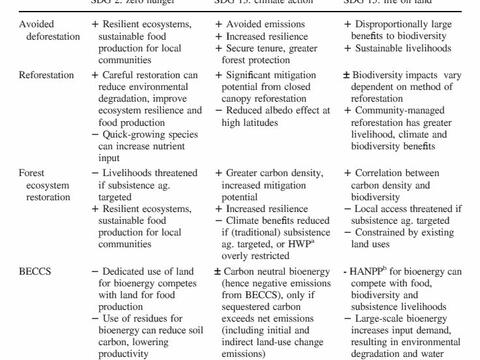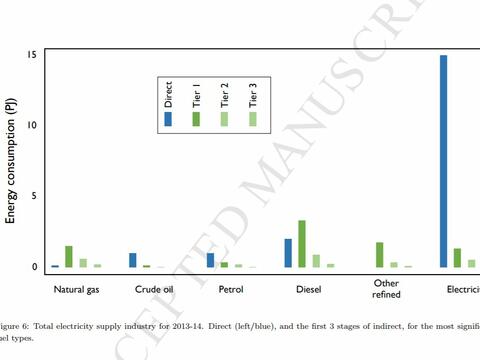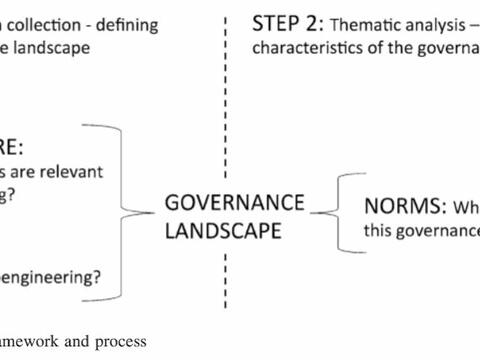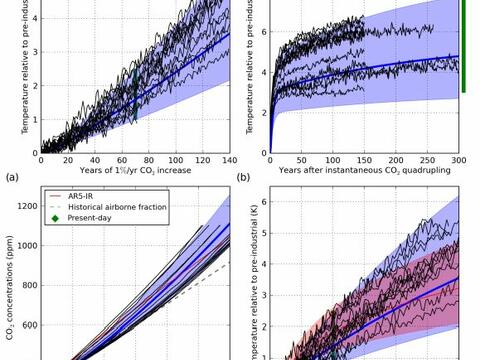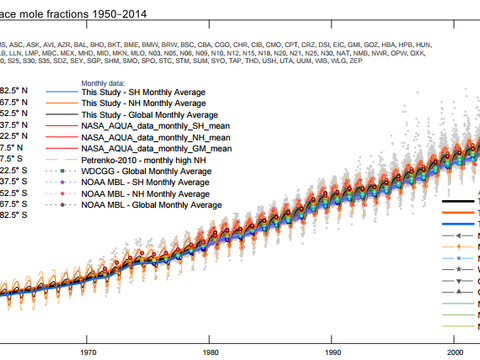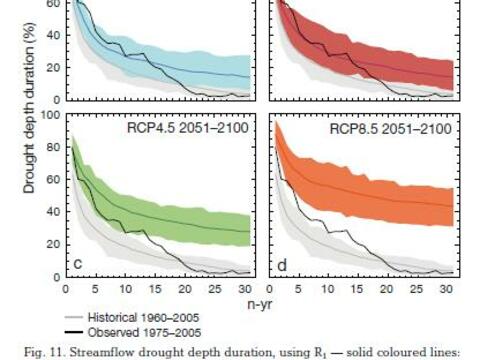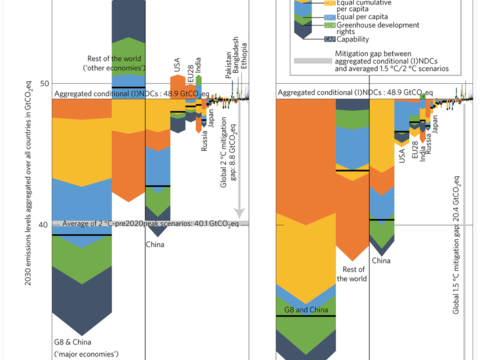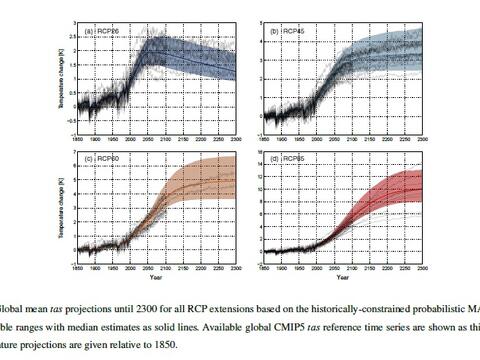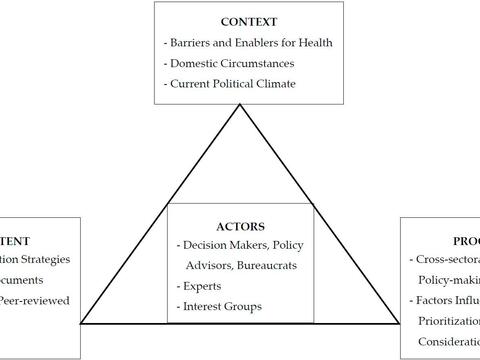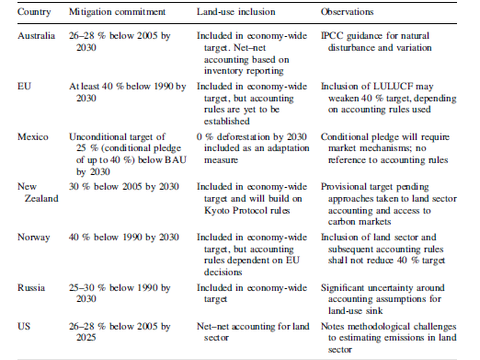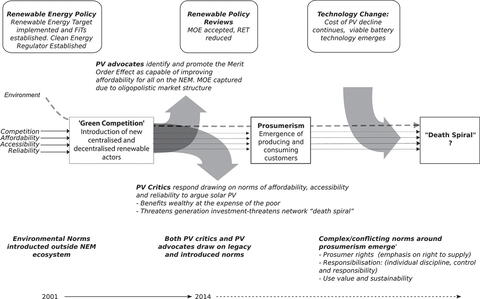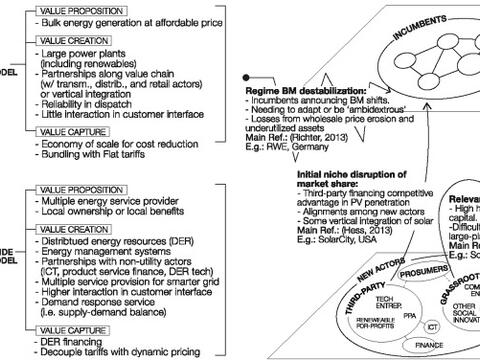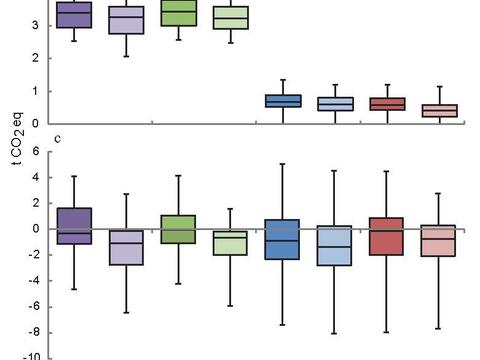Publications
-
Building Prosperous, Just, and Resilient Zero-Carbon Regions
Increasing recognition of the speed with which fossil fuels need to be phased out combined with sharp falls in renewable energy costs are creating significant challenges for many Australian regional communities with a long history of reliance on fossil fuel industries. At the same time, there is also increasing evidence that a well-managed, just transition to a zero-carbon economy can create huge...
-
Australia's Paris Agreement Pathways
CoverMarch2021us2.jpg SHIFTING THE BURDEN: Australia's emissions reduction tasks over coming decades Climate Targets Panel, March 2021 ABOUT THIS REPORT This is the second report of the Climate Targets Panel. Earlier this year, we published our findings about Australia’s required emissions reduction targets if we are to do our fair share in limiting global warming to well below 2° and 1.5°...
-
Land-based negative emissions: risks for climate mitigation and impacts on sustainable development
Authors : Kate Dooley and Sivan Kartha Abstract : This paper focuses on the risks associated with ‘‘negative emissions’’ technologies (NETs) for drawing carbon dioxide from the atmosphere through photosynthesis and storing it in land-based sinks or underground. Modelled mitigation pathways for 1.5 °C assume NETs that range as high as 1000 Gt CO2. We argue that this is two to three times greater...
-
An input-output based net-energy assessment of an electricity supply industry
Author : Graham Palmer Abstract : Electricity systems process and upgrade crude feedstock energy from the natural environment using high quality energy inputs, including diesel and electricity. The ratio of electricity output to the energy inputs is termed the energy-return-on-investment (EROI) and may be an important metric linking energy consumption and standard of living. Environmentally...
-
Geoengineering governance-by-default: an earth system governance perspective
Authors: Anita Talberg , Peter Christoff, Sebastian Thomas, and David Karoly Abstract: Geoengineering—the deliberate interference in the climate system to affect global warming—could have significant global environmental and social implications. How to shape formal geoengineering governance mechanisms is an issue of debate. This paper describes and analyses the geoengineering governance landscape...
-
A modified impulse-response representation of the global near-surface air temperature and atmospheric concentration response to carbon dioxide emissions
Authors : Richard J. Millar, Zebedee R. Nicholls , Pierre Friedlingstein, and Myles R. Allen Citation : Millar, R. J., Nicholls, Z. R., Friedlingstein, P., and Allen, M. R. 2017. A modified impulse-response representation of the global near-surface air temperature and atmospheric concentration response to carbon dioxide emissions, Atmospheric Chemistry and Physics, 17, 7213-7228, https://doi.org/...
-
Historical greenhouse gas concentrations for climate modelling (CMIP6)
Authors : Malte Meinshausen , Elisabeth Vogel , Alexander Nauels , and others. Abstract : Atmospheric greenhouse gas (GHG) concentrations are at unprecedented, record-high levels compared to the last 800 000 years. Those elevated GHG concentrations warm the planet and – partially offset by net cooling effects by aerosols – are largely responsible for the observed warming over the past 150 years...
-
A Framework for Incorporating EROI into Electrical Storage
Author : Graham Palmer Citation : Palmer, G. 2017. Biophysical Economics and Resource Quality 2(6) doi:10.1007/s41247-017-0022-3 Abstract : The contribution from variable renewable energy (VRE) to electricity generation is projected to increase. At low penetration, intermittency can usually be accommodated at low cost. High-penetration VRE will displace conventional generation, and require...
-
A short-lived gas shortfall
Authors: Tim Forcey, Dylan McConnell Abstract: With the publication of the 9 th March 2017 Gas Statement of Opportunities (GSOO), the Australian Energy Market Operator (AEMO) cautioned that within 18 months, “shortfalls” of gas supply could lead to shortfalls in the supply of electricity generated by burning gas. AEMO suggested solutions to potential shortfalls that included the construction of...
-
Energetic Implications of a Post-industrial Information Economy: The Case Study of Australia
Author : Graham Palmer Citation :Palmer, G. 2017. Energetic Implications of a Post-industrial Information Economy: The Case Study of Australia. BioPhysical Economics and Resource Quality ;2(2): 5. The article is available here Abstract : The potential for decoupling of energy and resources from economic growth should enable economic development while improving environmental sustainability...
-
Future Impacts of Climate Change on Streamflows
Authors : Sonya Fiddes and Bertrand Timbal Abstract : Streamflows in key catchments across the State of Victoria, Australia, are projected into the future utilising a previously developed multiple linear regression. The regression uses a temporal range of rainfall and temperature parameters to compute monthly streamflows, and is applied to an ensemble of 22 statistically downscaled global climate...
-
Equitable mitigation to achieve the Paris Agreement goals
Authors: Yann Robiou du Pont, M. Louise Jeffery, Johannes Gütschow, Joeri Rogelj, Peter Christoff & Malte Meinshausen Abstract : Benchmarks to guide countries in ratcheting-up ambition, climate finance, and support in an equitable manner are critical but not yet determined in the context of the Paris Agreement 1 . We identify global cost-optimal mitigation scenarios consistent with the Paris...
-
Synthesizing long-term sea level rise projections – the MAGICC sea level model
Authors : Alexander Nauels , Malte Meinshausen , Matthias Mengel , Katja Lorbacher, and Tom M. L. Wigley Abstract : Sea level rise is one of the major impacts of global warming; it will threaten coastal populations, infrastructure, and ecosystems around the globe in coming centuries. Well-constrained sea level projections are needed to estimate future losses from Sea Level Rise (SLR) and benefits...
-
The Role of Health Co-Benefits in the Development of Australian Climate Change Mitigation Policies
Authors : Annabelle Workman, Grant Blashki, David Karoly, and John Wiseman Abstract : Reducing domestic carbon dioxide and other associated emissions can lead to short-term, localized health benefits. Quantifying and incorporating these health co-benefits into the development of national climate change mitigation policies may facilitate the adoption of stronger policies. There is, however, a...
-
Governing by expertise: the contested politics of (accounting for) land-based mitigation in a new climate agreement
Authors: Kate Dooley and Aarti Gupta 2016 Abstract: This article analyzes the contested politics of including (and accounting for) land-based mitigation in a post-2020 climate agreement. Emissions from land have been only partially included to date within the United Nations Framework Convention on Climate Change and its Kyoto Protocol. The Paris Agreement, adopted in December 2015 and “applicable...
-
Environmental norms and electricity supply: an analysis of normative change and household solar PV in Australia
Abstract: This paper analyses normative change in electricity supply in order to understand the challenges associated with the introduction of a non-negotiable environmental norm, a change necessary to ensure long-term environmental sustainability of the supply system. The analysis combines the work of Wolfgang Streeck together with that of ecological modernisation to trace the fate of an...
-
National contributions for decarbonizing the world economy in line with the G7 agreement
Authors: Yann Robiou du Pont , M Louise Jeffery , Johannes Gütschow , Peter Christoff and Malte Meinshausen robiou_small.jpg Citation : National contributions for decarbonizing the world economy in line with the G7 agreement Yann Robiou du Pont, M Louise Jeffery, Johannes Gütschow, Peter Christoff and Malte Meinshausen 2016 Environ. Res. Lett. 11 054005 doi:10.1088/1748-9326/11/5/054005 Direct...
-
Business Models as Drivers of the Low Carbon Power System Transition: A Multi-Level Perspective
Authors : Martin E. Wainstein and Adam G. Bumpus Abstract : Decarbonising the electrical power system holds a critical role in climate change mitigation. Recent developments in technology are helping change the current centralized paradigm into one of integrated distributed clean energy resources. In spite of these developments, radical transformation is not occurring at a speed to effectively...
-
Modelling the influence of soil carbon on net greenhouse gas emissions from grazed pastures
Authors : Rachelle Meyer, Brendan R. Cullen, and Richard J., Eckard Abstract : Sequestering carbon (C) in soil organic matter in grassland systems is often cited as a major opportunity to offset greenhouse gas (GHG) emissions. However, these systems are typically grazed by ruminants, leading to uncertainties in the net GHG balance that may be achieved. We used a pasture model to investigate the...
-
Submission to the Climate Change Authority Special Review Second Draft Report on Australia’s Climate Policy Options
S UMMARY OF S UBMISSION The Paris agreement on climate change explicitly recognises that national contributions are not sufficient to hold global warming to the guardrails of 2 degrees and 1.5 degrees Celsius. The agreement includes a process for nations to regularly revise and increase the ambition of targets. Accordingly, the Authority must assess policies on the basis of how quickly they will...
Pages
Web tools and Projects we developed
Open-NEM
The live tracker of the Australian electricity market.
Paris Equity Check
This website is based on a Nature Climate Change study that compares Nationally Determined Contributions with equitable national emissions trajectories in line with the five categories of equity outlined by the IPCC.
liveMAGICC Climate Model
Run one of the most popular reduced-complexity climate carbon cycle models online. Used by IPCC, UNEP GAP reports and numerous scientific publications.
NDC & INDC Factsheets
Check out our analysis of all the post-2020 targets that countries announced under the Paris Agreement.
